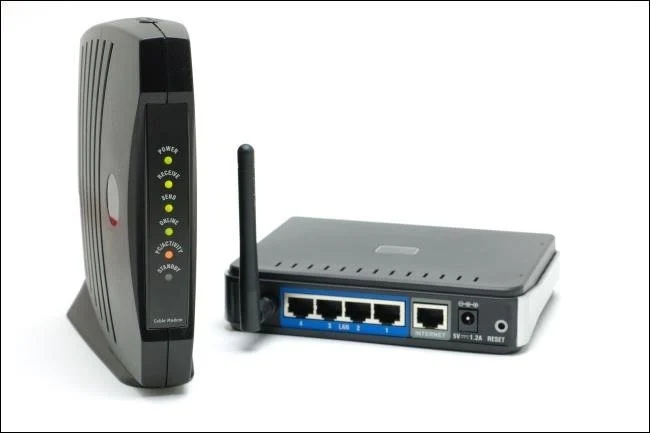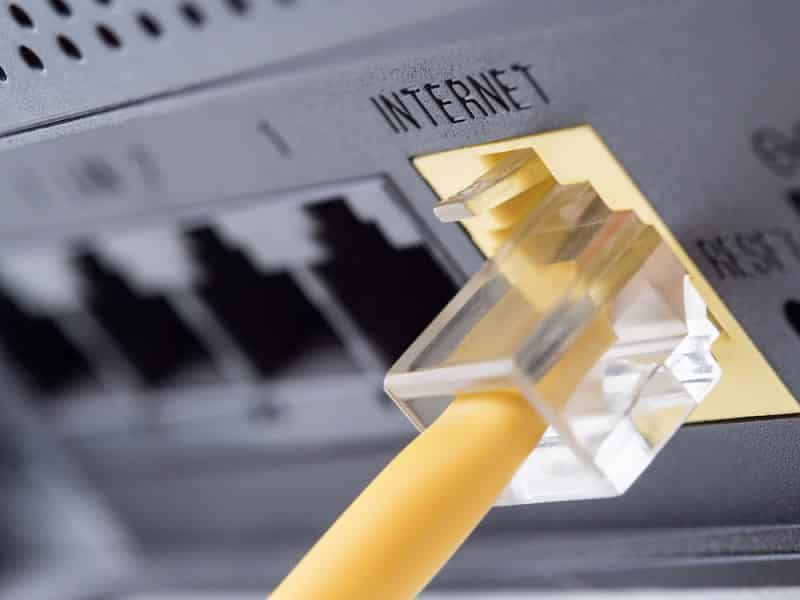A modem is an abbreviation for Modulation and Demodulation. It is a crucial device that enables computers and other digital devices to communicate over various internet connection types such as DSL, cable broadband, fiber-optic, and satellite internet.
Originally, modems converted digital data into analog signals for transmission over traditional telephone lines and then reconverted the signals into digital data at the receiving end. However, with the advent of high-speed broadband internet, modern modems now work primarily with digital signals, eliminating the need for analog conversion.
The Evolution of Modems: From Dial-Up to High-Speed Broadband
The history of modems dates back to the 1960s, when AT&T introduced the first-ever modem called the Dataphone. This invention marked the beginning of digital communication over analog networks.

Key Milestones in Modem Evolution
- 1960s: AT&T’s Dataphone becomes the first commercial modem.
- 1977: Dennis Hayes and Dale Heatherington introduce the 80-103A modem, setting the foundation for personal and home-use modems.
- 1980s – 1990s: Modems become widely available to the public, facilitating access to early internet services such as CompuServe, AOL, and bulletin board systems (BBS).
- 1990s – Early 2000s: The rise of dial-up modems dominates the market, providing speeds up to 56 Kbps. Internet users experienced the iconic dial-up modem handshake sound while connecting.
- 2000s – Present: Broadband modems replace dial-up, delivering high-speed internet through DSL, cable, optical fiber, and wireless technologies.
Today, high-speed broadband has eliminated the need for traditional dial-up internet. Most computers no longer come with built-in dial-up modems, and users who need one must purchase an external USB modem.
Types of Modems: Understanding Different Internet Technologies
There are various types of modems designed for different internet connections and communication needs. Below is a breakdown of the major modem types.
1. Optical Modem
- Uses fiber-optic technology to transmit data via light pulses rather than traditional copper wires.
- Delivers ultra-fast internet speeds, often exceeding 1 Gbps.
- Ideal for fiber-optic broadband services like Google Fiber, AT&T Fiber, and Verizon Fios.
2. Digital Modem
- Converts digital data into digital signals to facilitate high-speed data transmission over dedicated digital lines.
- Used in DSL, cable, and satellite modems.
3. Acoustic Modem (AC Modem)
- An older type of modem that transmits audio signals over telephone lines.
- Was commonly used in early computing to connect traveling salespeople with their company networks.
4. Smart Modem
- Features auto-dial, auto-redial, and auto-answer capabilities.
- Uses the Hayes AT command set to facilitate automated communication.
- Once popular for fax machines and remote access systems.
5. Short Haul Modem
- Designed for local network connections within short distances (typically up to 20 miles).
- Commonly used in offices and industrial environments.
6. Dial-Up Modem
- Converts analog signals from telephone lines into digital data for internet connectivity.
- Maximum speed: 56 Kbps (but often limited to 33.6 Kbps due to network constraints).
- Now mostly obsolete due to broadband advancements.
7. Broadband Modem
- Used for high-speed internet connections such as DSL, cable, and fiber.
- Eliminates the slow speeds of dial-up modems.
- Typically provided by internet service providers (ISPs) as part of a home or business internet package.
Types of Broadband Modems
- DSL Modem: Works with telephone lines but offers faster speeds than dial-up.
- Cable Modem: Connects via coaxial cables, offering faster speeds than DSL.
- Fiber Modem: Uses fiber-optic cables for gigabit internet speeds.
- Cellular Modem: Uses mobile networks (3G, 4G, 5G) for wireless broadband connectivity.
How Does a Modem Work?
A modem acts as a bridge between your home network and your internet service provider (ISP). Here’s how it functions:
- Receiving Data: The modem receives data signals from your ISP via cable, DSL, or fiber.
- Conversion: The modem modulates and demodulates data, converting it from a network-compatible format into a format usable by your devices.
- Transmission: The modem sends the processed data to your router or directly to your device via Ethernet or Wi-Fi.
Characteristics of Modems
- High-Speed Data Transfer: Broadband modems support speeds from 100 Mbps to 10 Gbps, depending on the technology.
- Compatibility with Routers: Many modems include built-in router functionality for wireless internet access.
- Auto-Dial and Auto-Redial Features: Smart modems can automatically dial or reconnect when the connection drops.
- Caller ID and Voicemail Integration: Some modems support dual simultaneous voice and data (DSVD) technology.
FAQ’s
1. What is a Wi-Fi Modem?
A Wi-Fi modem combines both a modem and a wireless router into a single device, allowing you to access the internet via Wi-Fi without needing an external router.
2. What is the Difference Between a Modem and a Router?
- A modem connects your home to the internet via your ISP.
- A router distributes the internet connection to multiple devices via Wi-Fi or Ethernet.
3. Can I Replace My ISP-Provided Modem?
Yes, many ISPs allow you to use your own modem, which can save you from monthly rental fees and offer better performance.
4. What is the Best Modem for Home Internet?
It depends on your internet connection type:
- For Cable Internet: Arris SURFboard SB8200, Netgear CM1000.
- For DSL: Netgear DM200, Motorola MD1600.
- For Fiber: Your ISP typically provides a modem.
5. Do I Need a Modem if I Have a Router?
Yes, unless your router has a built-in modem. A router alone cannot connect directly to the internet without a modem.
6. How Do I Know If My Modem is Failing?
Signs of a failing modem include:
- Frequent internet disconnections.
- Slow speeds despite a good plan.
- Overheating or physical damage.
Conclusion
Modems are essential devices that connect homes and businesses to the internet. Whether you’re using fiber, DSL, or cable internet, choosing the right modem can significantly impact your internet speed and performance.
By understanding the different types of modems, their capabilities, and how they integrate with modern networking technology, you can optimize your home or business internet connection for better performance and reliability.

